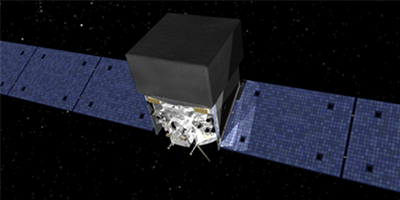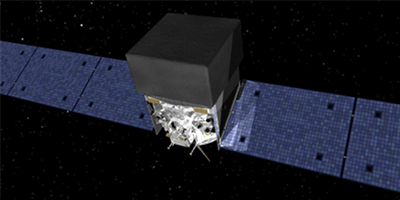Still in the Dark
WIMPs—weakly interacting massive particles—are one of the leading candidates for dark matter. Theory predicts they may annihilate when they collide with each other, releasing gamma rays either directly or as the WIMPs decay through a cascade of intermediate states. Researchers working with the Large Area Telescope (LAT) onboard the orbiting Fermi Gamma-Ray Space Telescope have looked for such signals in places with copious dark matter and have published their results in Physical Review D after four years of observations. While no out-of-the-ordinary gamma rays were detected that could definitively point to dark matter, the team was able to place better bounds on annihilation cross sections.
The LAT researchers analyzed gamma rays from near the Milky Way, observing dwarf satellite galaxies known to contain large amounts of dark matter (as concluded from the way the stars move in the gravity field). The dark matter abundance of such galaxies, combined with their proximity and the absence of large gamma-ray backgrounds, make them one of the most promising detection targets. Since 2008, LAT has been collecting gamma-ray data at energies from mega-electron-volts to over giga-electron-volts. In looking for possible signals, the team considered numerous standard-model annihilation channels (electron-positron, muon-antimuon, and so on) each expected to yield gamma rays with characteristic energy spectra.
While the researchers found no dark matter signal, they were able to calculate the maximum cross section for WIMP annihilation, deriving new limits that, for some dark matter models, are a factor of stronger than existing ones. But as researchers peer into more dwarf galaxies and other dark-matter-rich regions of the Universe, there is still hope for dark matter detection. – David Voss





